Rail vs. Pipeline Oil Transportation: Which Mode is Better
Oil transportation ensures crude oil and refined products reach refineries, storage facilities, and markets efficiently. Among the primary modes of transporting oil, rail and pipelines are the most widely used. While both methods serve the same purpose, they differ significantly in cost, safety, environmental impact, and flexibility. This article explores a detailed comparison of rail vs. pipeline oil transportation, how to choose the right mode between the two options, and how simulation technologies are used for optimizing the two modes of oil and gas transportation.
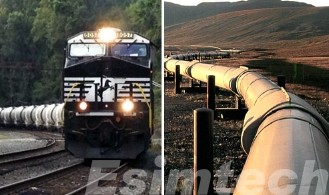
What is Rail Transportation in the Oil and Gas Industry
Rail transportation in the oil and gas industry refers to the use of trains to transport crude oil, refined petroleum products, and natural gas liquids (NGLs) across regions. It provides a flexible and scalable alternative to pipelines, allowing producers to quickly respond to market demand and reach destinations without pipeline infrastructure. Rail transport is especially useful for shipping oil from remote production areas to refineries and export terminals. However, it comes with higher costs, increased safety risks, and greater environmental impact compared to pipelines. Despite these challenges, rail remains a vital mode of oil and gas logistics, particularly in regions with limited pipeline capacity.
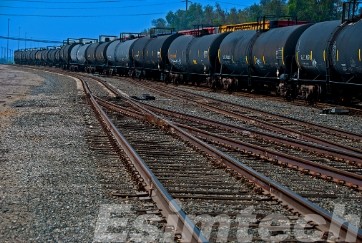
What is Pipeline Transportation
Pipeline transportation is the process of transporting crude oil, refined petroleum products, and natural gas through a network of pipelines over long distances. It is the most cost-effective and efficient method for moving large volumes of oil and gas, offering continuous flow with minimal operational costs. Pipelines are designed for safety and reliability, reducing transportation risks compared to other methods. However, they require significant initial investment, regulatory approvals, and long-term infrastructure commitments. Despite these challenges, pipelines remain the backbone of global oil and gas logistics, ensuring a steady supply to refineries, storage facilities, and distribution centers.
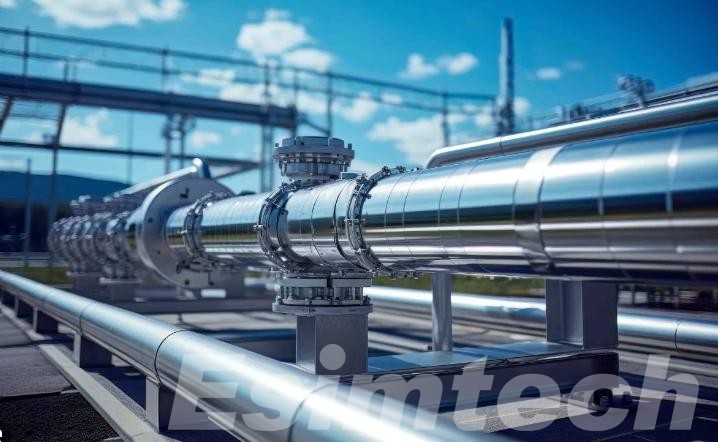
A Comparative Analysis of Rail vs. Pipeline Oil Transportation
1. Cost
Cost is a major factor influencing the choice between rail and pipeline transportation.
- Pipeline Transportation: Pipelines are the most cost-effective method for transporting large volumes of oil over long distances. Once a pipeline is constructed, operating costs are relatively low, and the per-barrel transportation cost is significantly lower than rail. However, the initial investment in building pipelines is high due to construction, permitting, and regulatory compliance costs.
- Rail Transportation: Rail transport offers a flexible alternative but comes with higher costs. It requires ongoing expenditures on fuel, railcars, labor, and maintenance. Additionally, rail transportation costs can fluctuate based on fuel prices and demand for rail services.
2. Safety and Risk Factors
Both pipelines and railways pose safety risks, including spills, leaks, and accidents.
- Pipeline Safety: Pipelines are generally safer than rail when considering accident frequency. Most pipeline spills occur due to corrosion, equipment failure, or external damage. Although spills can be large, modern pipeline monitoring systems help detect leaks and minimize environmental damage.
- Rail Safety: Rail transport has a higher accident rate per barrel of oil transported. Derailments, collisions, and human errors contribute to the risk. Additionally, rail transportation of oil through populated areas increases the potential for hazardous incidents, such as explosions in cases of crude oil tank car accidents.
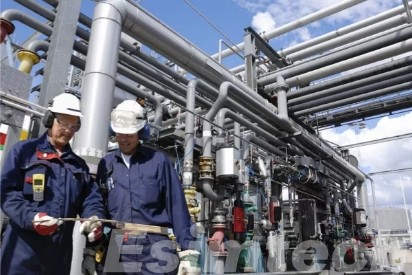
3. Environmental Impact
Oil transportation has environmental consequences, making sustainability a key consideration.
- Pipeline Impact: Pipelines have a lower carbon footprint than rail due to continuous, energy-efficient operation. However, pipeline leaks can cause extensive soil and water contamination. Additionally, new pipeline projects face opposition due to concerns about land disturbance, ecosystem disruption, and indigenous land rights.
- Rail Impact: Rail transport emits more greenhouse gases per barrel than pipelines because it relies on diesel-powered locomotives. However, rail transport avoids the need for permanent land use, making it more adaptable to environmental regulations and permitting processes.
4. Flexibility and Market Access
Flexibility in oil transportation is crucial for producers seeking market access and adaptability to demand fluctuations.
- Pipeline Flexibility: Pipelines offer a dedicated and continuous flow of oil but lack flexibility. Once a pipeline is built, its route is fixed, and adding capacity requires new infrastructure. This limits the ability to respond quickly to market changes.
- Rail Flexibility: Rail transport provides more flexibility, allowing oil producers to send shipments to various destinations without the need for extensive infrastructure investment. Rail is ideal for transporting oil from new production sites that lack pipeline connectivity.
5. Speed and Delivery Time
The time taken to deliver oil to refineries and end users affects market efficiency.
- Pipeline Speed: Pipelines operate continuously, moving oil at a steady pace. However, transit times can be slow, especially for long distances, as crude oil moves through multiple pump stations.
- Rail Speed: Rail transport is faster for short-to-medium distances since trains can be dispatched as needed. However, congestion on rail networks, weather conditions, and logistical delays can impact delivery times.
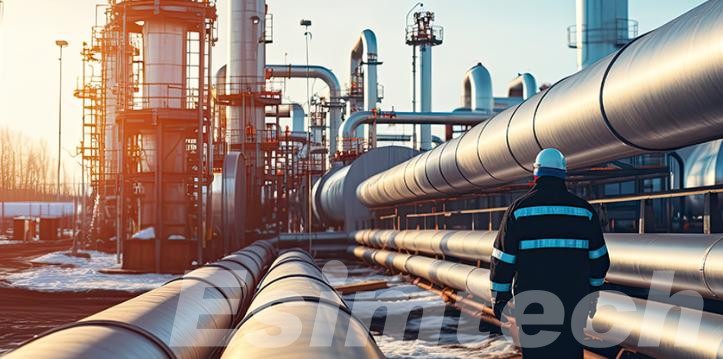
6. Regulatory and Political Challenges
Regulatory policies and political factors play a significant role in oil transportation infrastructure.
Pipeline Regulations: Pipeline projects face significant regulatory hurdles, including environmental impact assessments, land acquisition disputes, and government approvals. Projects like Keystone XL have been delayed or canceled due to political opposition.
Rail Regulations: Rail transport faces fewer regulatory barriers, making it easier to expand oil shipments in response to demand. However, stricter safety regulations following derailments have increased compliance costs.
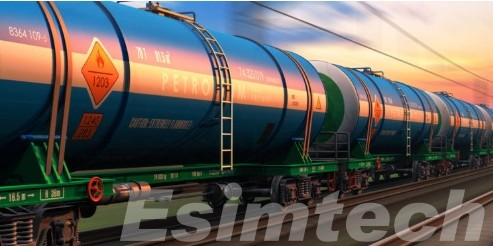
Choosing Between Rail vs. Pipeline Oil Transportation
| Factor | Pipeline | Rail |
| Cost | Lower per-barrel transportation cost but high initial investment. | Higher per-barrel cost due to fuel, labor, and railcar expenses. |
| Safety | Lower accident rate, but pipeline leaks can be large if they occur. | Higher accident rate, with risks of derailments and explosions. |
| Environmental Impact | Lower carbon emissions but risks of major spills and land disruption. | Higher emissions due to diesel trains but more adaptable to regulations. |
| Flexibility | Fixed infrastructure with limited adaptability. | More flexible—can reach different markets without additional infrastructure. |
| Speed | Continuous flow but slower over long distances. | Faster for short distances but subject to rail congestion. |
| Market Access | Limited to locations with pipeline infrastructure. | Can transport oil to multiple destinations as needed. |
| Regulatory Hurdles | Extensive approvals and environmental concerns. | Fewer regulations, allowing quicker adaptation. |

Summary
- Pipelines are the preferred option for long-term, high-volume transportation due to lower costs, improved safety, and reduced environmental impact.
- Rail is the better choice for flexibility, quick deployment, and access to multiple markets, despite higher costs and safety risks.
- For an optimal oil transportation strategy, a combination of both methods is often used, such as pipelines for bulk transport and rail for supplemental capacity and market diversification.
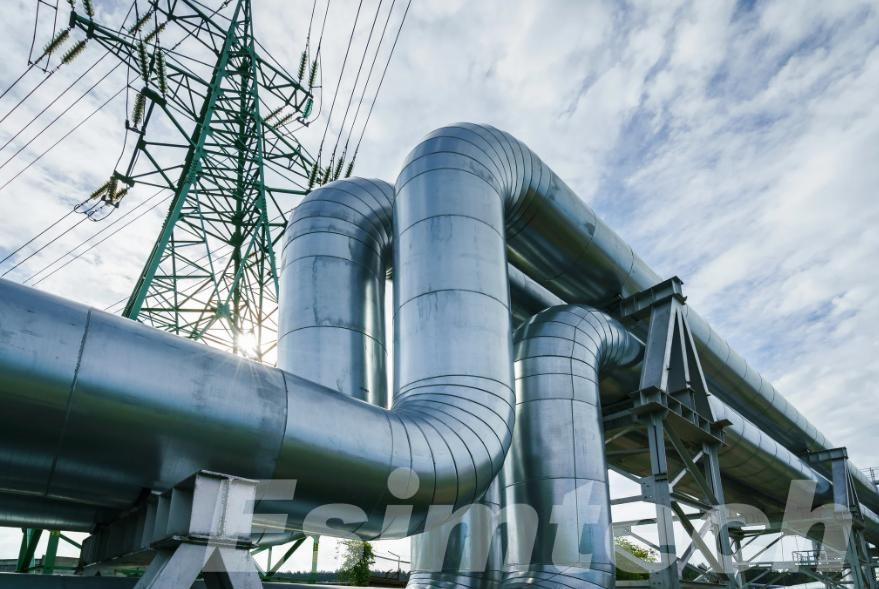
How Simulation Technologies are Used for Rail and Pipeline Oil Transportation
Advanced oil transportation simulation systems enable operators to analyze real-world scenarios, test different strategies and enhance infrastructure planning.
| Category | Rail Transportation | Pipeline Transportation |
| Logistics Optimization | Simulates train routes, capacity, and scheduling. | Model oil flow behavior for optimal pipeline capacity use. |
| Risk & Accident Analysis | Analyzes derailments, collisions, and hazardous material risks. | Detects pipeline leaks, pressure drops, and pipeline failures. |
| Fuel & Emission Control | Optimizes locomotive performance to reduce fuel consumption. | Simulates energy-efficient flow control to minimize losses. |
| Infrastructure Design | Tests tank car durability under stress and impact. | Assesses pipeline materials and design for long-term reliability. |
| Maintenance Planning | Predicts wear on rail infrastructure for preventive maintenance. | Forecasts pipeline degradation and schedules proactive repairs. |
| Environmental Impact | Models oil spill effects and emergency response strategies. | Simulates spill spread and assists in rapid containment plans. |
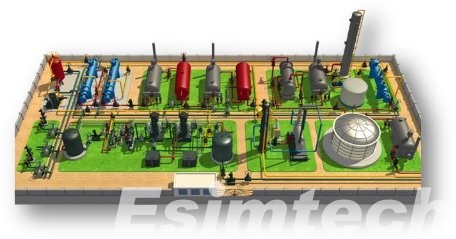
Final Thoughts
The choice between rail and pipeline oil transportation depends on the specific needs of oil producers, market conditions and regulatory environments. Simulation technologies help rail by optimizing logistics, safety, and fuel efficiency, while enhancing pipeline transportation operations through flow control, leak detection, and maintenance planning.

